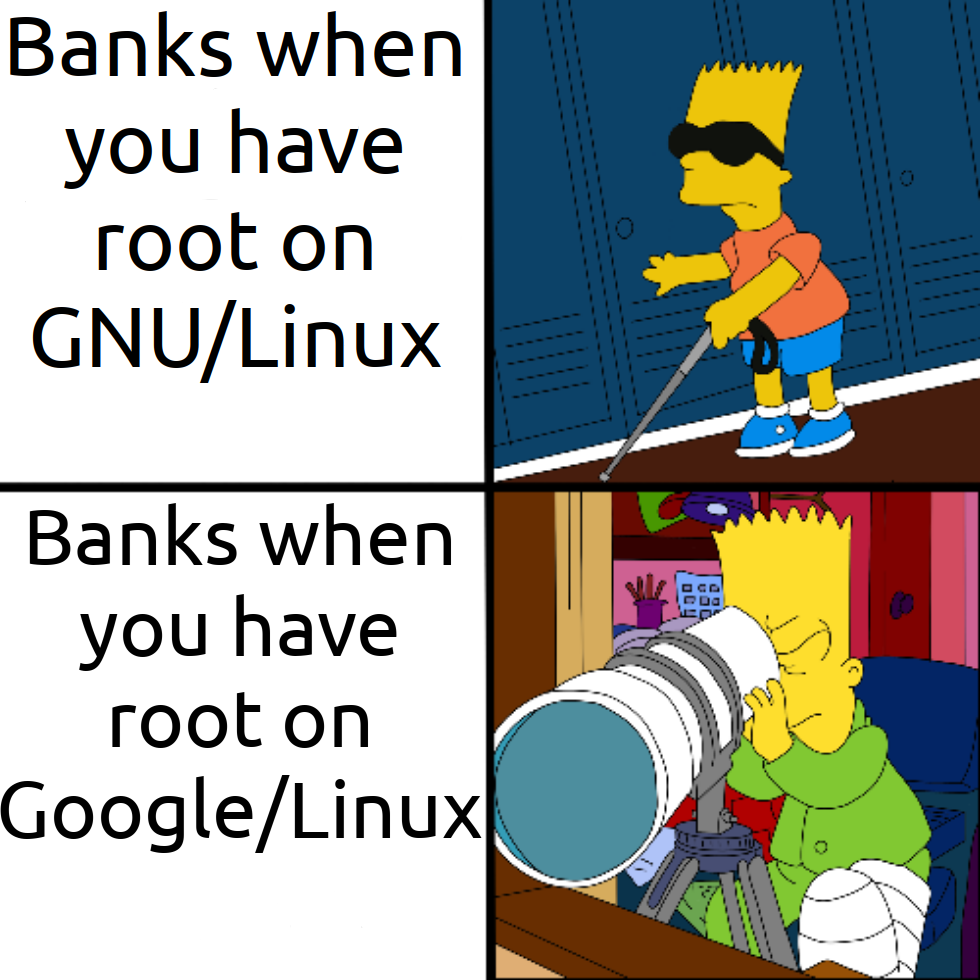this post was submitted on 04 Apr 2024
1018 points (98.8% liked)
linuxmemes
21260 readers
2057 users here now
Hint: :q!
Sister communities:
- LemmyMemes: Memes
- LemmyShitpost: Anything and everything goes.
- RISA: Star Trek memes and shitposts
Community rules (click to expand)
1. Follow the site-wide rules
- Instance-wide TOS: https://legal.lemmy.world/tos/
- Lemmy code of conduct: https://join-lemmy.org/docs/code_of_conduct.html
2. Be civil
- Understand the difference between a joke and an insult.
- Do not harrass or attack members of the community for any reason.
- Leave remarks of "peasantry" to the PCMR community. If you dislike an OS/service/application, attack the thing you dislike, not the individuals who use it. Some people may not have a choice.
- Bigotry will not be tolerated.
- These rules are somewhat loosened when the subject is a public figure. Still, do not attack their person or incite harrassment.
3. Post Linux-related content
- Including Unix and BSD.
- Non-Linux content is acceptable as long as it makes a reference to Linux. For example, the poorly made mockery of
sudoin Windows. - No porn. Even if you watch it on a Linux machine.
4. No recent reposts
- Everybody uses Arch btw, can't quit Vim, and wants to interject for a moment. You can stop now.
Please report posts and comments that break these rules!
founded 1 year ago
MODERATORS
you are viewing a single comment's thread
view the rest of the comments
view the rest of the comments

I guess I don't know what you mean by "authenticating transactions".
Online transactions require a second factor which displays the actual amount to be transferred. This works by either an app which receives the transaction data (recipient, how much) over the network, or a device which takes the bank card and is used to scan something similar to a qr code. The device then displays the transaction data.
This makes sure a fraudulent site can't easily change the amount or the recipient of a transaction, even if they somehow made an identical website (or close enough).
https://www.ecb.europa.eu/press/intro/mip-online/2018/html/1803_revisedpsd.en.html
It's not perfect, especially with people using a banking app and the second factor app on the same device for convenience sake.
Interesting. If they do that in the US some day, I would absolutely much rather buy that device than unroot my phone.